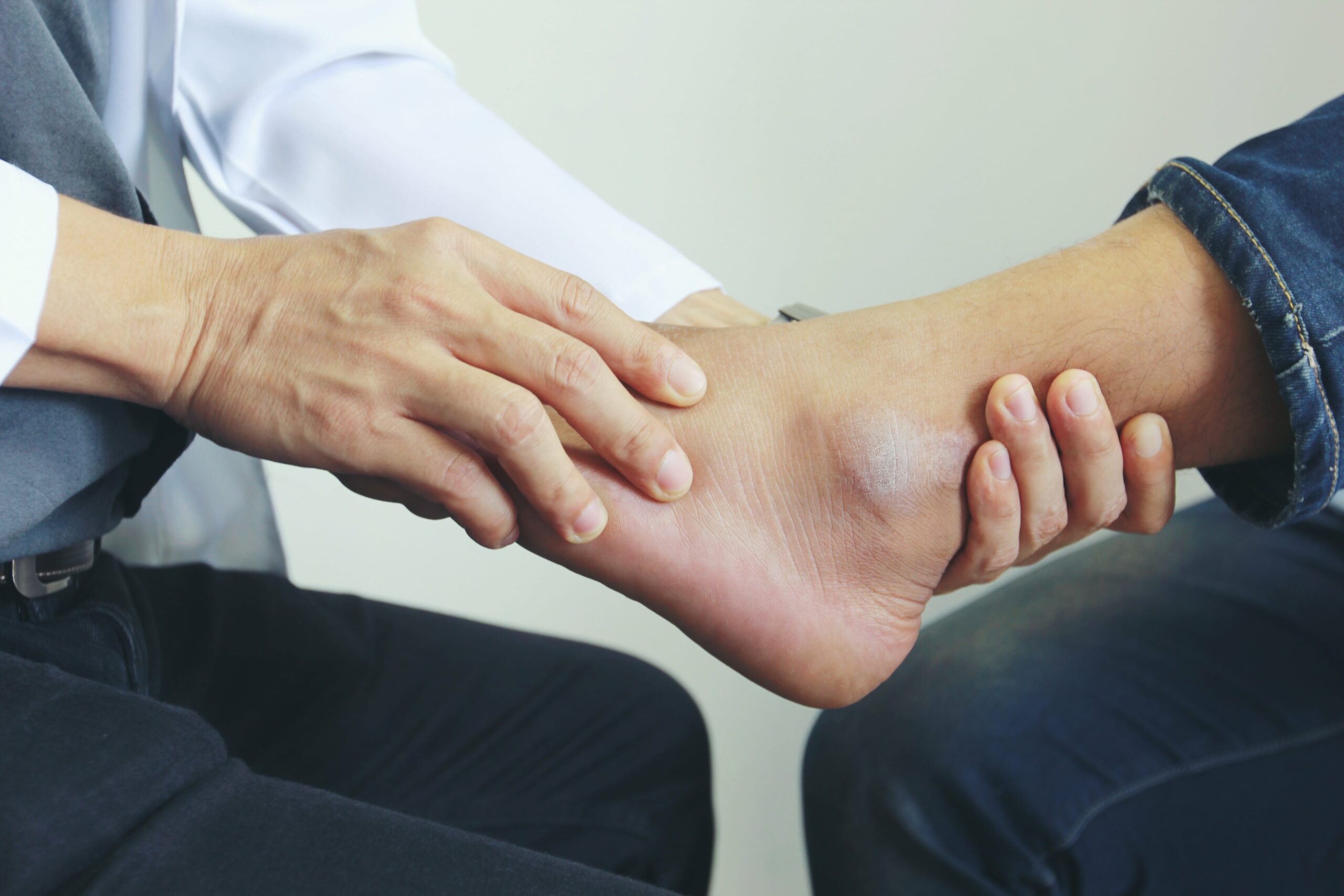Diagnosis and Treatment of Calcaneus (Heel Bone) Fractures in Wake County

What is a Heel Bone Fracture?
The calcaneus, or heel bone, forms the foundation for the back part of the foot. Its connection with other bones in the foot forms the subtalar joint, which is important for the normal functioning of the foot. Calcaneus fractures are not as simple as a break in a bone – they lead to collapse and fragmentation that can severely damage the surrounding area within the foot. Heel bone fractures most commonly occur following a serious accident or significant fall. Proper diagnosis and treatment are crucial, as calcaneus fractures have the potential to cause long-term mobility issues.

Causes of Heel Bone Fractures
Heel bone fractures are most commonly caused by a sudden accident, such as falling from a significant height or being involved in a car crash. Roofers and climbers are often subject to these types of fractures. The violent impact that occurs during these situations can crush the heel under the rest of the body, shattering the bone and leading to a severe injury. In situations like these, it is not uncommon for a patient to experience other fractures at the same time.
Heel Bone Fracture Risk Factors
As the main cause of heel bone fractures are sudden accidents, there are not many specific risk factors for this kind of injury. However, some calcaneal fractures can occur as a result of a stress fracture, which occurs due to overexercise or overuse of the foot. Calcaneal stress fractures are not as serious as heel bone fractures caused by an accident. Those with certain medical conditions, including osteoporosis, diabetes mellitus, and peripheral neuropathy may be at a greater risk for heel bone fractures.
Symptoms of Heel Bone Fractures
Symptoms of a calcaneal fracture are usually obvious and prompt the patient to visit the emergency room or orthopedic specialist sooner rather than later. Symptoms of a heel bone fracture include:
- Sudden pain in the heel
- Inability to put weight on the affected foot
- Swelling around the heel
- Heel and ankle bruising
- Limping (in cases of more mild fracture)
How are Calcaneus Fractures Diagnosed?
Before any imaging tests are performed, your doctor will spend time on a physical exam to assess your heel bone injury. They will ask you about your injury, how it occurred, and your medical history. They will look for tenderness in the heel area and assess your foot’s function and physical appearance. From there, imaging tests will be used to confirm the diagnosis. X-rays will show your doctor which bones are broken and whether they are displaced within the foot. Once a fracture is confirmed, a CT scan may be used to provide insights into the severity of the fracture and help formulate your treatment plan.

Treatment Options for Heel Fractures at Raleigh Orthopaedic
Calcaneal fractures require prompt and efficient treatment in order to restore the balance of the foot and prevent long-term complications. Depending on the severity of your injury, your doctor may opt for either nonsurgical or surgical treatment.
In the case of injuries where the bones of the heel have not been displaced, nonsurgical treatment may be sufficient for treating the fracture. In most cases, a cast must be worn for 6 to 8 weeks so that the bones can be held in the proper position while they heal. You should not put any weight on your foot until the fracture is fully healed. The ultimate goal of treatment for a calcaneus fracture is to recreate the normal anatomy of the heel, and in many cases, surgery is required to accomplish this.
Displacement of the heel bone due to injury often requires surgery. There are many things to consider when planning surgery for a heel bone fracture. The surgery must be timed depending on whether or not the skin around your heel is broken or if swelling is present. Waiting until surface issues with the foot have healed can help you avoid infection after surgery. Open fractures, on the other hand, require immediate surgery to clean the wound and remove damaged tissue in the area. The exact type of surgery you receive will depend on the state of the heel bone and the severity of your injury. Those with the most severe heel bone fractures may experience some level of function loss, even with successful treatment.

Heel Bone Fracture Recovery Time
Just like proper treatment, proper healing time is extremely important when a patient experiences a heel bone fracture. Most patients need to wait at least 3 months before putting weight on their injured foot, whether their treatment was surgical or nonsurgical. Your doctor will instruct you on how to move the foot while recovering without injuring yourself further. It is crucial to follow your doctor’s instructions exactly as you heal. You may also find it helpful to use crutches, a cane, or a walker to avoid putting weight on your injured foot. Normal activities can sometimes be resumed 3 to 4 months after surgery. For more severe fractures, recovery may take 1 to 2 years. Physical therapy is often part of a patient’s recovery plan, and your doctor will guide you on the best next steps for you.
How Can I Prevent Heel Fractures?
Unfortunately, it is difficult to prevent a heel bone fracture that is caused by a sudden, traumatic injury. Stress fractures of the heel bone can sometimes be prevented by taking care of your body and giving yourself time to rest and recover between training sessions or high-impact activities. Padded heel inserts and proper footwear can also reduce strain on the heels and help prevent future injury.

Expert Foot and Heel Care at Raleigh Orthopaedic
Those seeking care for both minor and complex injuries and conditions of the foot and ankle can trust our orthopedic specialists at Raleigh Orthopaedic. We help those of all ages get back to doing what they love via comprehensive and personalized treatment plans. To schedule an appointment at one of our convenient clinic locations in Wake County, NC, please contact us today.




